In February 2014, the University of Miami Libraries commemorated Black History Month with The Truth Marches On, an exhibition featuring materials from the realms of music, television, pop culture, politics, and more. The exhibition was located on the first and second floors of Otto G. Richter Library.
Choose the corresponding tabs above to find out more information. Each tab represents a display case or wall display.
Equality: Martin Luther King, Jr. and Nelson Mandela.
Photos: Photographs from Haiti, by Maggie Steber.
Politics: What Does it Mean to be Black in America?
Graphic Novels/Comics: GraFight.
Sports: Black History in Sports.
Music: The Hi-De-Ho Man.
Film/TV: From Blackface to Black Faces.
Orichas: The Divine Orichas, by Alberto del Pozo.
Belief: Afro-Caribbean Beliefs.
Slavery: A Transatlantic Slave Economy.
Literature: Voiced in Ink.
Choose the corresponding tabs above to find out more information. Each tab represents a display case or wall display.
Equality: Martin Luther King, Jr. and Nelson Mandela.
Photos: Photographs from Haiti, by Maggie Steber.
Politics: What Does it Mean to be Black in America?
Graphic Novels/Comics: GraFight.
Sports: Black History in Sports.
Music: The Hi-De-Ho Man.
Film/TV: From Blackface to Black Faces.
Orichas: The Divine Orichas, by Alberto del Pozo.
Belief: Afro-Caribbean Beliefs.
Slavery: A Transatlantic Slave Economy.
Literature: Voiced in Ink.
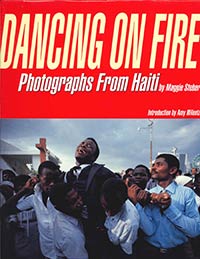 “Maggie Steber studied photography at the University of Texas in Austin under Russell Lee and Garry Winogrand. She has produced bodies of work on the guerrilla war in Zimbabwe, Cuba and Haiti, where she has worked steadily since 1986. Her awards include an Alicia Patterson Foundation grant, the first Ernst Haas Grant, and the Leica Medal of Excellence. She has worked for many publications, including The New York Times, National Geographic, and Life, and her photographs have been widely exhibited."
“Maggie Steber studied photography at the University of Texas in Austin under Russell Lee and Garry Winogrand. She has produced bodies of work on the guerrilla war in Zimbabwe, Cuba and Haiti, where she has worked steadily since 1986. Her awards include an Alicia Patterson Foundation grant, the first Ernst Haas Grant, and the Leica Medal of Excellence. She has worked for many publications, including The New York Times, National Geographic, and Life, and her photographs have been widely exhibited." Dancing on Fire: Photographs From Haiti, by Maggie Steber, Jacket.
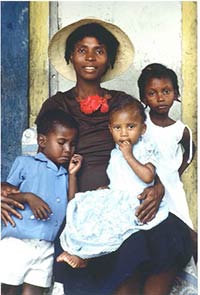 Photographs on display are from the Maggie Steber Photography Collection, University of Miami Libraries Special Collections
Photographs on display are from the Maggie Steber Photography Collection, University of Miami Libraries Special CollectionsPeasant Family, May 1988
A Haitian peasant farm wife and her children pose proudly for a family portrait they requested in the small village of Duverger, near Fond des Nègres in southern Haiti.
Mother’s Funeral, November 1987
A young Haitian man struggles in grief at the funeral of his mother in the National Cemetery in Port-au-Prince, Haiti, in November 1987. His family and friends try to hold him back from the coffin about to be placed into a crypt. The woman was one of hundreds of Haitians who died during pre-election violence leading up to the November 1987 presidential elections, the first in thirty years, following the fall of the Duvalier family dictatorship.
Moments Later, 1990
A Haitian policeman waits for an accused thief to reach shore at the harbor in Port-au-Prince, Haiti, in 1990, after the man was caught in middle of a robbery. Once the man’s foot touched shore, a second policeman at the side raised his rifle and shot the man, killing him on the spot. Justice and the lack of it has plagued Haiti for decades, and often takes place on the spot without charges or fair trials.
Dead Blue Man, November 1987
The body of a man sits in the alcove of a home along a well-traveled path in Carrefour, a poor neighborhood on the southern edge of Port-au-Prince, in November 1987, a few days before Haiti’s first democratic presidential elections in 30 years. All-night shooting sessions went on for several weeks prior to the elections. The unidentified killers displayed the corpse to warn people of their fate, if they voted in the elections. When Election Day arrived, the polls opened and closed in one hour after many people were massacred at polling stations. Elections were cancelled.
Ballot by Candlelight, December 1990
A Haitian voter in the Carrefour Feuille neighborhood of Port-au-Prince pores over a ballot showing the presidential and congressional candidates in the December 1990 elections. All over the country citizens lined up into the night, voting by candlelight and braving threats from drive-by thugs who shot into the crowds. Jean-Bertrand Aristide, a former priest, won the elections to assume power as president. Aristide was elected by better than 80% of the voting population.
Sulking on a Sunday Morning, May 2010
A Haitian boy sulks outside the makeshift plywood hut he shares with his family in a tent camp in the center of Port-au-Prince after his mother admonished him for not doing his chores in May 2010. He and as many as one million Haitians were left homeless following a massive earthquake that struck Haiti in January 2010, killing over 350,000 people.
When Hunger Overcomes Fear, January 1986
In January 1986, riots and demonstrations against the Duvalier regime broke out throughout Haiti, especially in Cap-Haitien in the north. Following a full day of peaceful demonstrations over the high price of food, starving Haitians ransacked a huge food depot for CARE, a U.S. aid agency. People covered the building like ants on a piece of candy, despite the efforts of the Haitian Army and police to drive them back (as with a boy who tried to pull a box of food from beneath a shuttered door). One week later, the thirty-year Duvalier family dictatorship fell and Jean-Claude Duvalier fled with his family and loyal officers into exile with the help of the United States.
Jean-Rabel Jesus, May 1988
A small Haitian boy sits in front of a painting of Jesus on the porch of his house in Jean-Rabel.
Blue Lace Dress, December 1990
A young girl dancing in her blue lace dress belies the sinister poverty and violence that resides in the dusty barren streets of Rabato, a slum just outside Gonaives, Haiti. Rabato is a scene of regular political protest and is thus the target of numerous slaughters and attacks on its citizens. But on this day, there was only the singing and dancing of this young Haitian.
Philomène, May 1988
Philomène, a young Haitian schoolgirl, poses for a portrait against the school wall in her village of Beauchamps, in the dry northwest of Haiti in May 1988. Philomène embodies the singular beauty and pride of her people.
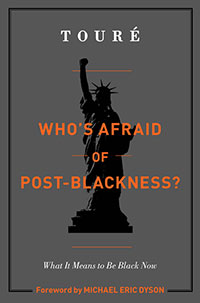 Case summary
Case summaryWhat does it mean to be black in America? This display case contains a contemporary and critical survey of topics such as race, gender, and racial identification through works by politicians, scholars, musicians, social critics, and more. The discussion ranges from symposia presented in Tavis Smiley’s The Covenant With Black America; to new media such as Twitter where ?uestlove, or Questlove, has become a popular voice; and from Touré’s discussion of “post-blackness” and the fluidity of racial identity, to Michelle Alexander’s argument that racism still exists but has been redesigned. The conversation is no longer solely about being black – there is a new emphasis on race based on gender roles.
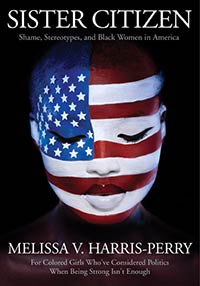 Case contents
Case contents- Alexander, Michelle. The New Jim Crow : Mass Incarceration in the Age of Colorblindness. New York: [Jackson, TN]: New Press, 2012.
- Crocco, Margaret Smith, ed. Teaching the Levees: A Curriculum for Democratic Dialogue and Civic Engagement. New York: Teachers College Press, 2007.
- Dr. Cornel West at the Bank United Center for UM's 50th anniversary of desegregation. February 22, 2012.
- Questlove and Ben Greenman. Mo' Meta Blues: The World According to Questlove. New York: Grand Central Publishing, 2013.
- hooks, bell. Ain't I a Woman : Black Women and Feminism. Boston, Mass: South End Press, 1981.
- Isoke, Zenzele. Urban Black Women and the Politics of Resistance. New York: Palgrave Macmillan, 2013.
- Lewis, John, Andrew Aydin, and Nate Powell, illus. March. Book One. Marietta, GA: Top Shelf Productions, 2013.
- McGruder, Aaron. All the Rage: The Boondocks Past and Present. New York: Three Rivers Press, 2007.
- President Barack Obama visting the University of Miami during his 2012 campaign for reelection. The Bank United Center, October 11, 2012.
- Smiley, Tavis, introduction. The Covenant with Black America. Chicago:Third World Press, 2006.
Case contents
- Bendis, Brian M, Jonathan Hickman, Nick Spencer, Sara Pichelli, Salvador Larroca, and Clayton Crain. Ultimate Comics Spider-Man. New York: Marvel, 2012.
- Johnson, James W, Florence L. Bentley, Bois W. E. B. Du, Langston Hughes, Alice M. Dunbar-Nelson, Claude McKay, Zora N. Hurston, Robert W. Bagnall, Jean Toomer, James D. Corrothers, Paul L. Dunbar, Ethel M. Caution, Effie L. Newsome, Charles W. Chesnutt, Leila A. Pendleton, James E. Campbell, Frances E. W. Harper, Tom Pomplun, Lance Tooks, and Afua Richardson. African-American Classics. Mount Horeb, Wis: Eureka, 2011.
- Johns, Geoff, and Sciver E. Van. Green Lantern: Rebirth. New York: DC Comics, 2005.
- Johnson, Mat, Warren Pleece, and Clem Robins. Incognegro. New York: Vertigo/DC Comics, 2008.
- Laird, Roland O,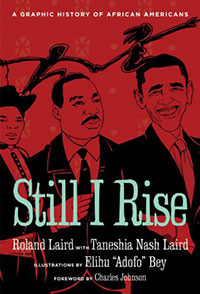 Taneshia N. Laird, and Elihu Bey. Still I Rise: A Graphic History of African Americans. New York, NY: Sterling, 2009.
Taneshia N. Laird, and Elihu Bey. Still I Rise: A Graphic History of African Americans. New York, NY: Sterling, 2009.
- Long, Mark, Colleen A. F. Venable, Erin Tobey, Jim Demonakos, and Nate Powell. The Silence of Our Friends. New York: First Second, 2012.
- McFarlane, Todd, and Greg Capullo. Spawn: Origins Collection. Berkeley, CA: Image Comics, 2009.
- McGregor, Don, Rich Buckler, Klaus Janson, and Tom Orzechowski. Essential the Black Panther. New York: Marvel Comics, 2012.
- Neri, Greg, and Randy DuBurke. Yummy: The Last Days of a Southside Shorty. New York: Lee & Low Books, 2010.
- Strömberg, Fredrik. Black Images in the Comics: A Visual History. Seattle, Wash.: Fantagraphics, 2003.
- Wein, Len, and Chris Claremont. Essential X-Men. New York: Marvel Pub, 2008. Print.
- Zimmerman, Dwight J, and Wayne Vansant. The Hammer and the Anvil: Frederick Douglass, Abraham Lincoln, and the End of Slavery in America. New York: Hill and Wang, 2012.
- Bendis, Brian M, Jonathan Hickman, Nick Spencer, Sara Pichelli, Salvador Larroca, and Clayton Crain. Ultimate Comics Spider-Man. New York: Marvel, 2012.
- Johnson, James W, Florence L. Bentley, Bois W. E. B. Du, Langston Hughes, Alice M. Dunbar-Nelson, Claude McKay, Zora N. Hurston, Robert W. Bagnall, Jean Toomer, James D. Corrothers, Paul L. Dunbar, Ethel M. Caution, Effie L. Newsome, Charles W. Chesnutt, Leila A. Pendleton, James E. Campbell, Frances E. W. Harper, Tom Pomplun, Lance Tooks, and Afua Richardson. African-American Classics. Mount Horeb, Wis: Eureka, 2011.
- Johns, Geoff, and Sciver E. Van. Green Lantern: Rebirth. New York: DC Comics, 2005.
- Johnson, Mat, Warren Pleece, and Clem Robins. Incognegro. New York: Vertigo/DC Comics, 2008.
- Laird, Roland O,
 Taneshia N. Laird, and Elihu Bey. Still I Rise: A Graphic History of African Americans. New York, NY: Sterling, 2009.
Taneshia N. Laird, and Elihu Bey. Still I Rise: A Graphic History of African Americans. New York, NY: Sterling, 2009.- Long, Mark, Colleen A. F. Venable, Erin Tobey, Jim Demonakos, and Nate Powell. The Silence of Our Friends. New York: First Second, 2012.
- McFarlane, Todd, and Greg Capullo. Spawn: Origins Collection. Berkeley, CA: Image Comics, 2009.
- McGregor, Don, Rich Buckler, Klaus Janson, and Tom Orzechowski. Essential the Black Panther. New York: Marvel Comics, 2012.
- Neri, Greg, and Randy DuBurke. Yummy: The Last Days of a Southside Shorty. New York: Lee & Low Books, 2010.
- Strömberg, Fredrik. Black Images in the Comics: A Visual History. Seattle, Wash.: Fantagraphics, 2003.
- Wein, Len, and Chris Claremont. Essential X-Men. New York: Marvel Pub, 2008. Print.
- Zimmerman, Dwight J, and Wayne Vansant. The Hammer and the Anvil: Frederick Douglass, Abraham Lincoln, and the End of Slavery in America. New York: Hill and Wang, 2012.

Cristina Favretto
- Head, Special Collections
- cfavretto@miami.edu
- (305) 284-3247

Robin Potter Nolasco
- Special Collections Librarian & Public Services Coordinator for the Kislak Center
- robinnolasco@miami.edu
- (305)
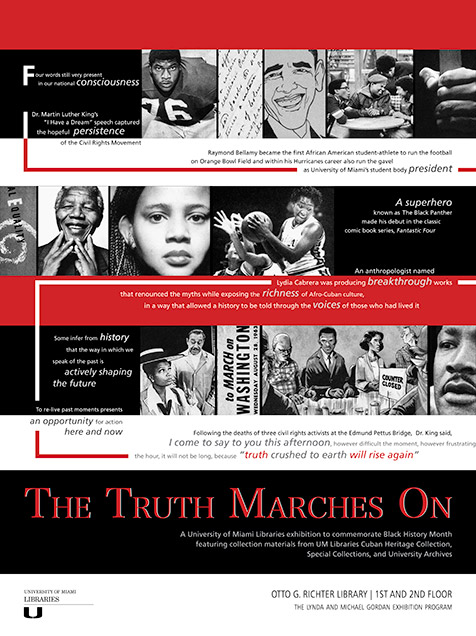
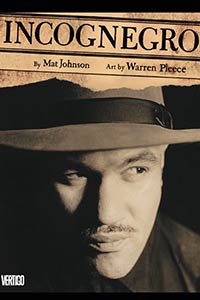 Case summary
Case summary